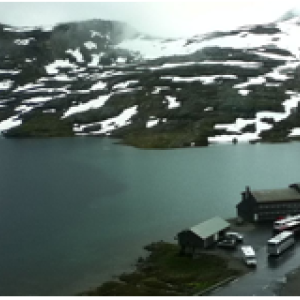
This paper by Drew Schindell from NASA's ’s Goddard Institute for Space Studies looks at climate change trends and tries to explain the much publicised and contested slowdown in global surface temperatures since 1998.
Climate sensitivity is a measure known as the amount of warming expected for a doubling of carbon dioxide. Carbon dioxide usually absorbs infra-red radiation at a fixed rate, so that the warming is 1°C for each doubling of CO2 levels. Climate sensitivity however, needs to take account not only of this fixed rate of absorption but also the feedback loops in the climate system. This means that the expected heating is normally said to be higher than 1°C.
The Schindell paper looks specifically at a short term measurement of sensitivity called the transient climate response, or TCR. This is the temperature rise you get if you double carbon-dioxide levels by increasing them at a rate of 1% a year for 70 years. Schindell criticises the low estimates of the TCR (around 1.5°C, with a range of 1-2°C) and shows how a climate cooling effect is not likely to be as large as anticipated in other studies. The cooling effect is explained by aerosols—reflective particles in the atmosphere reacting with clouds and producing a cooling effect - but Schindell argues that the modelling of the effect is wrong and thus gives a too high cooling effect. The short term temperature (TCR) is therefore in Schindell’s estimate set to 1.7°C instead of 1.5°C meaning that lower sensitivity estimates (below 1.3°C) seem less and less likely.
This paper comes at a time when climate skeptic lobby group the Global Warming Policy Foundation has stated that the global temperature increases due to carbon dioxide will be lower rather than higher. However, this research and other recent papers suggest that even if the climate's sensitivity to carbon dioxide is at the lower end of their spectrum, the world is still heading for three degrees Celsius of warming this century unless emissions are cut.
Abstract
Understanding climate sensitivity is critical to projecting climate change in response to a given forcing scenario. Recent analyses1, 2, 3 have suggested that transient climate sensitivity is at the low end of the present model range taking into account the reduced warming rates during the past 10–15 years during which forcing has increased markedly4. In contrast, comparisons of modelled feedback processes with observations indicate that the most realistic models have higher sensitivities5, 6. Here I analyse results from recent climate modelling intercomparison projects to demonstrate that transient climate sensitivity to historical aerosols and ozone is substantially greater than the transient climate sensitivity to CO2. This enhanced sensitivity is primarily caused by more of the forcing being located at Northern Hemisphere middle to high latitudes where it triggers more rapid land responses and stronger feedbacks. I find that accounting for this enhancement largely reconciles the two sets of results, and I conclude that the lowest end of the range of transient climate response to CO2 in present models and assessments7 (<1.3 °C) is very unlikely.
Citation
Shindell D. T., 2014, Inhomogeneous forcing and transient climate sensitivity, Nature Climate Change, doi:10.1038/nclimate2136
Read the full paper in Nature here. You can also read overage of this research and the debate about temperature and sensitivity estimates here and here.
On the FCRN website you can find more information about climate change GHG trends here and also some climate change science and background here.












Post a new comment »